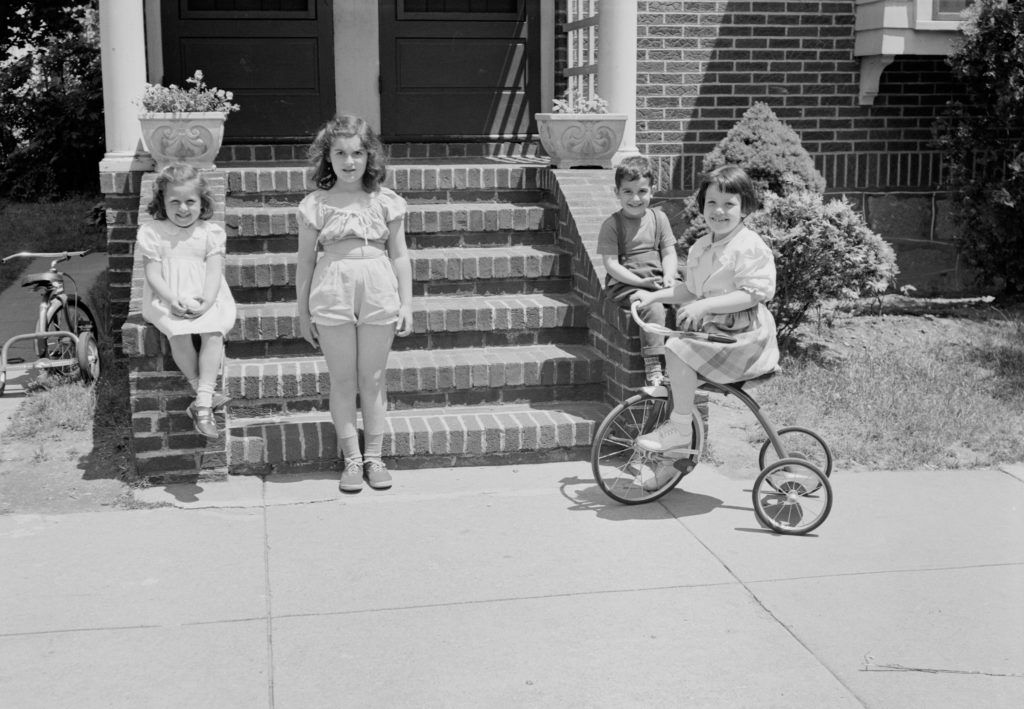I saw the littles from a block away, zooming from corner to corner on their push bikes and scooters. As I approached, I saw that there were two adults stationed in the center of the intersection, monitoring the kiddos and watching for cars. I crossed the street and soon after I heard one of the adults call out in a clear, solid tone: “Car. Everyone stop on the sidewalk.”
The zooming stopped immediately and the car passed safely. I was delighted to have witnessed this, and not just because it makes me happy to see kiddos playing on a beautiful afternoon. As a communication afficionado (yes, we exist), I was actually even happier about the message modeling.
Here’s what I mean.
The adult alerted everyone to the situation by simply saying “Car.” No drama, no extraneous words. The message would not have been more impactful if they’d added, “Hey kids, there’s a car coming.” Car was enough.
They followed up by giving very specific and complete directions: who should do what and where. Everyone (not just people on scooters) stop (not slow down, or watch out) on the sidewalk (as opposed to just stopping in place which is what could have happened if they’d just said “stop” as littles are often quite literal).

In the interest of making sure we get our message across with nuance and kindness, we often say too much. Of course there are times that communication requires expansive context and detailed explanations. But probably a lot less often than we think.
Consider when you might benefit from being more concise in your messaging. I know it is difficult because we often center the emotions of a situation, but sometimes it is ok to just focus on the facts.
Here are a few examples from my life:
Kids: please put all dirty dishes in the top rack of the dishwasher before 8pm.
Clients: kindly complete the values worksheet and submit it to me 24 hours before your first session.
Self: turn off your computer at 5:30pm and close the door to your office.
We are conditioned to believe that being indirect is the same as being nice, but being direct can actually be just as kind (for more on that see “Try It!” below). Keeping in mind the “Four T’s” of communication—tone, texture, tenor and timing—practice centering your message on who needs to do what and when. As with all approaches, it is never one-size-fits-all, but if you really need to get people out of the street, tell them to stop on the sidewalk.
Try it!
Direct Can Be Kind
If you’re new to being direct it may feel uncomfortable at first, not only because many of us spend a lot of time worrying about hurting someone else’s feelings but also because we think we’re being kinder by giving a lot of cushioning with our messages. Sometimes softness and squishiness is appropriate, but consider the reframe that being direct can be a form of kindness.
By being direct you are:
-Trusting in the other person’s emotional maturity and agency
-Creating a space where honesty is a shared value
-Respecting the power of words
-Preventing misunderstandings which can lead to hurt feelings or more complexity
-Honoring your own truth (which is being kind to yourself!)
(other) Smart People
“Direct, honest, straightforward communication is kind. Sidestepping the truth doesn’t serve anyone involved.” – Gina Senarighi
Text…
Receive the “Slice of Sunshine” in your inbox by subscribing to the Department of Practical Sunshine newsletter.
Text…
Try it!
Text…
